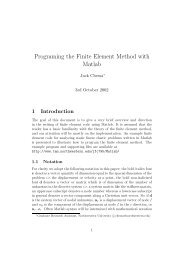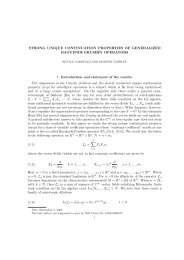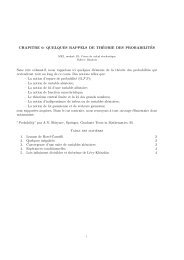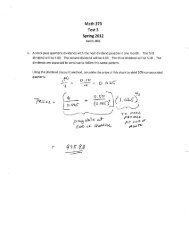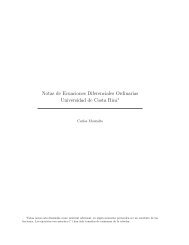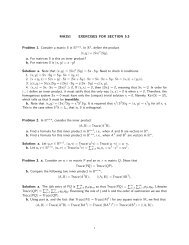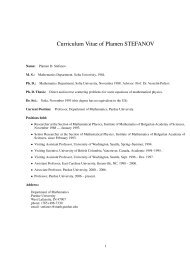The Solar Chimney
The Solar Chimney
The Solar Chimney
Create successful ePaper yourself
Turn your PDF publications into a flip-book with our unique Google optimized e-Paper software.
<strong>The</strong> <strong>Solar</strong> <strong>Chimney</strong> Schlaich Bergermann<br />
und Partner<br />
3. <strong>The</strong> technology<br />
3.1. <strong>The</strong> collector<br />
Hot air for the solar chimney is produced by the greenhouse effect in a simple air collector<br />
consisting only of a glass or plastic film covering stretched horizontally two to six<br />
meters above the ground. <strong>The</strong> height of the covering increases adjacent to the chimney<br />
base, so that the air is diverted to vertical movement with minimum friction loss. This<br />
covering admits the short-wave solar radiation component and retains long-wave radiation<br />
from the heated ground. Thus the ground under the roof heats up and transfers its<br />
heat to the air flowing radially above it from the outside to the chimney.<br />
3.2. <strong>The</strong> energy storage<br />
Water filled black tubes are laid down side by side on the soil under the glass roof collector.<br />
<strong>The</strong>y are filled with water once and remain closed thereafter, so that no evaporation<br />
can take place. <strong>The</strong> volume of water in the tubes is selected to correspond to a water<br />
layer with a depth of 5 to 20 cm depending on the desired power output characteristics.<br />
glass roof<br />
into the air<br />
soil<br />
Day<br />
into the soil and<br />
the water tubes<br />
water tubes<br />
into the air<br />
Night<br />
Fig. 3: Principle of heat storage underneath the roof using water-filled black tubes.<br />
Since the heat transfer between black tubes and water is much larger than that between<br />
the ground surface and the deeper soil layers, even at low water flow speed in the<br />
tubes, and since the heat capacity of water (4.2 kJ/kg) is much higher than that of soil<br />
(0.75 - 0.85 kJ/kg) the water inside the tubes stores a part of the solar heat and releases<br />
it during the night, when the air in the collector cools down.<br />
Structural Consulting<br />
Engineers<br />
.<br />
Last update 2002 Page 6<br />
soil





